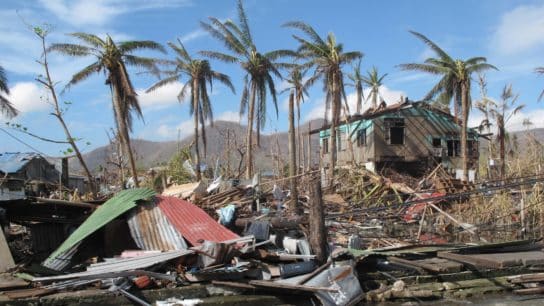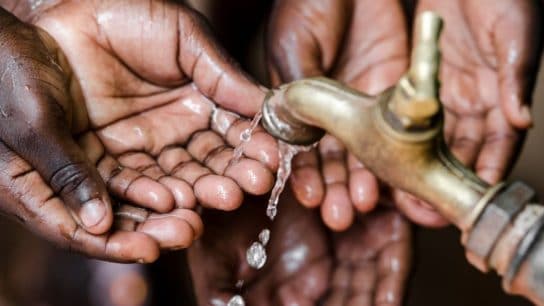Cows are a major source of methane emissions, with their burping accounting for a significant portion of global greenhouse gas output. Researchers are investigating various dietary and farming practices that could help reduce methane production from cattle, offering potential solutions to this environmental challenge.
—
Methane is a greenhouse gas responsible for about a third of global warming. Although it stays in the earth’s atmosphere for about 12 years, it has 84 times more warming power than carbon dioxide (CO2) over a 20-year timescale.
How Are Methane Emissions and Cow Burps Related?
There are many natural and anthropogenic sources of methane. Human activities like rice cultivation, livestock management, anaerobic decomposition in landfills, and fossil fuel exploration and transportation contribute to about 50-65% of methane emissions globally. As cattle digest their food, they produce and emit methane, specifically enteric methane.
Let’s take a deep dive into the process.

Cattle, like cows, deer, sheep, and buffalo, belong to a specific group of animals known as ruminants. Characterized by their four-chambered organs, ruminants are able to rapidly have a large meal of grass and hay and later digest it by re-chewing it in their mouth. In the cattle’s stomach, a rumen microbe called methanogen converts the excess hydrogen and CO2 produced during the digestion of this high-fiber food to methane. This methane, called enteric methane, is expelled from the cattle’s body as belching or burping.
In 2022, methane from enteric fermentation accounted for 27.4% of total anthropogenic methane emissions in the US and 3% of total gross emissions.
How Do We Solve This?
1. Changing Cattle Diet
Enteric methane is the result of a high-fiber diet of grass and hay fed to cattle. It helps the body eliminate excess hydrogen in the most energy-efficient way.
Studies have shown that changing cattle diets to high-quality forage like legumes makes digestion easy. Legumes are low in fiber and contain highly soluble carbohydrates, which produce less methane. Supplementing them with animal feeds like maize or soy can further ease the process. Unsaturated fats, which are a high energy source and have an inhibitory effect on methane production, can also be a helpful change.
2. Feed Additives
Feed additives are one of the most promising ways to reduce enteric methane production. They can be divided into two types:
- Rumen Modifiers: These modify the rumen microbial system to lower methane production by about 30%. Examples include medium-chain and unsaturated fatty acids, plant extracts such as essential oils, tannins, saponins, ionophores, or nitrate.
- Direct Inhibitors: These inhibit enzymes of ruminal methanogenesis and can reduce methane production by 30% to 95%, depending on the type, dose, and duration of use. Examples include 3-nitrooxypropanol [3-NOP], halogen-containing seaweed, or synthetic bromoform.
Bovear, containing 3-nitrooxypropanol [3-NOP], is the first cattle feed additive that reduces enteric methane production by 30%. The FDA recently approved Bovear in the USA, and it is available in several other countries, including Brazil, Chile, and the European Union.
Bromoform found in Asparagopsis Taxiformis, a variety of red seaweed, has been found to reduce methane generation by up to 55% in dairy cows and up to 98% in beef cattle.
While helpful, feed additives have certain barriers. For example, producing red seaweed at scale is currently expensive and energy-intensive. Also, feed additives should be administered to animals in intensive feedlots rather than while they are grazing. Grazing cattle are a significant contributor of enteric methane.
3. Cow Masks
Another way of lowering methane emissions from cattle is collecting it at the source before releasing it into the atmosphere. UK-based startup Zelp has designed a burp-catching mask for cows. These masks detect, capture, and oxide methane released from the nostrils and mouth of the cow. A catalyst inside the mask converts methane into CO2 and water and releases it into the air, which takes a decade to happen naturally in the atmosphere. These masks can reduce methane emissions from cattle by 60%. While promising, managing these masks in farms with a large number of animals is a labor-intensive task.
4. Vaccines
Vaccines help the immune system produce specific antibodies that attack and fight the targeted pathogen in humans and animals. This concept is the basis for the research and development of bovine vaccines. In this case, the vaccine must target only methanogens and no other pathogens in the animal’s digestive system. The vaccine should be efficient enough to be effective in just a few shots. Once developed, the final product must undergo clinical trials, on-farm testing, and regulatory approvals before being available.
Vaccines help the immune system produce specific antibodies that attack and fight the targeted pathogen in humans and animals. This concept is being explored to develop bovine vaccines to reduce enteric methane. In this case, the vaccine must target only methanogens and no other pathogens in the animal’s digestive system. Also, it should be efficient enough to be effective in just a few shots.
ArkeaBio, a Boston-based startup, which has raised $38.5 million till date, is developing these vaccines. Currently, in the R&D phase, ArkeaBio aims to make their vaccines highly effective and scalable to address the issue of enteric methane. Once developed, the final product must undergo clinical trials, on-farm testing, and regulatory approvals before being available.
5. Genetic Selection
Many advanced genetic technologies, such as genomic selection, microbiome-based breeding strategies, metagenomic investigations, and genetic selection of animals, are being researched. This will allow livestock breeders to select favorable traits like healthier breeds, increased productivity, and low enteric emissions.
You might also like: The Importance of Addressing Planet-Warming Methane Emissions in the Energy Sector
What’s Next?
There is a general reluctance among farmers and livestock owners to take steps to reduce enteric emissions. According to research by the environmental advocacy group Environmental Defense Fund (EDF), lack of financial incentives and uncertainty around productivity gains prove to be significant drawbacks to adopting the solutions explored in this article. Limited awareness about new techniques and their benefits is also responsible for low adoption rates.
To address this issue, the US Senate introduced the Enteric Methane Innovation Tools for Lower Emissions and Sustainable Stock, also known as EMITLESS Act, in March 2024. It provides financial and technical support to farm owners through training and grants, bolstering research into finding new solutions and strengthening existing ones to ensure more safety and productivity for cattle.
Methane emissions from enteric fermentation have risen by over 5% since 1990, primarily due to an increase in the cattle population. Without proper intervention, this number is poised to grow further. Addressing methane’s near-term warming effect presents immediate climate benefits in a long and slow decarbonization process. Reducing enteric methane can help achieve this goal.
Featured image: melle/Pexels.
How can I contribute to a more sustainable planet?
- 🗳️ Vote for Climate Action: Exercise your democratic rights by supporting candidates and policies that prioritize climate change mitigation and environmental protection. Stay informed with Earth.Org’s election coverage.
- 👣 Reduce Your Carbon Footprint: Make conscious choices to reduce your carbon footprint. Opt for renewable energy sources, conserve energy at home, use public transportation or carpool, and embrace sustainable practices like recycling and composting.
- 💰 Support Environmental Organizations: Join forces with organizations like Earth.Org and its NGO partners, dedicated to educating the public on environmental issues and solutions, supporting conservation efforts, holding those responsible accountable, and advocating for effective environmental solutions. Your support can amplify their efforts and drive positive change.
- 🌱 Embrace Sustainable Habits: Make sustainable choices in your everyday life. Reduce single-use plastics, choose eco-friendly products, prioritize a plant-based diet and reduce meat consumption, and opt for sustainable fashion and transportation. Small changes can have a big impact.
- 💬 Be Vocal, Engage and Educate Others: Spread awareness about the climate crisis and the importance of environmental stewardship. Engage in conversations, share information, and inspire others to take action. Together, we can create a global movement for a sustainable future.
- 🪧 Stand with Climate Activists: Show your support for activists on the frontlines of climate action. Attend peaceful protests, rallies, and marches, or join online campaigns to raise awareness and demand policy changes. By amplifying their voices, you contribute to building a stronger movement for climate justice and a sustainable future.
For more actionable steps, visit our ‘What Can I do?‘ page.
This story is funded by readers like you
Our non-profit newsroom provides climate coverage free of charge and advertising. Your one-off or monthly donations play a crucial role in supporting our operations, expanding our reach, and maintaining our editorial independence.
About EO | Mission Statement | Impact & Reach | Write for us














